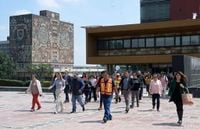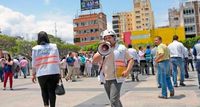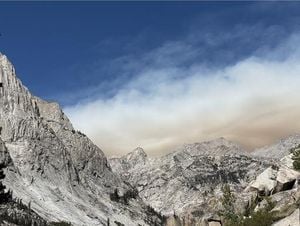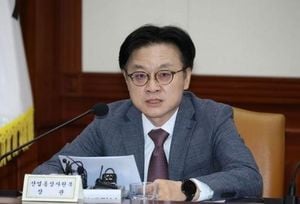On April 29, 2025, Mexico will conduct its First National Drill, simulating a catastrophic earthquake with a magnitude of 8.1, centered in the Gulf of Tehuantepec. This exercise aims to enhance public preparedness for seismic events and improve the country's emergency response capabilities.
During a recent morning press conference, Laura Velázquez Alzúa, the national coordinator for Civil Protection, announced that the drill would start at 11:30 AM (Mexico City time). The exercise is designed to test the effectiveness of the seismic alert system, which will send a message to millions of mobile devices, stating, "Esto es un simulacro" (This is a drill), accompanied by a distinctive alert sound. It is anticipated that at least five million devices will receive this notification.
This upcoming drill follows a previous attempt on September 19, 2024, which was deemed unsuccessful due to technical difficulties that prevented the alert from reaching all intended recipients. However, Velázquez Alzúa expressed confidence in the improvements made since then, stating that over ten technical rehearsals have been conducted in collaboration with major telecommunications companies, including Altán Redes, Telefónica, Telcel, and AT&T.
In addition to the seismic alert, the drill will also include a tsunami alert exercise coordinated by the Secretariat of the Navy (SEMAR) to prepare coastal communities for potential emergencies. The seismic alert system will be activated in 12 states, utilizing 14,491 speakers strategically placed throughout the regions, along with radio and television broadcasts.
Chiapas, one of the states most susceptible to seismic activity, will play a crucial role in the drill, which will take place simultaneously across the nation. Residents in Chiapas will receive the alert via public speakers, radio, television, and mobile phones, ensuring comprehensive coverage of the warning.
The message that will appear on mobile devices in Chiapas reads: "#Este es un simulacro #Este es un simulacro Se activó la alerta sísmica el 29 de abril del 2025 a las 11:30 h. Sensor cercano a Tehuantepec, Oaxaca #Este es un simulacro #Este es un simulacro." This alert will vibrate and emit a distinctive sound for approximately eight seconds, prompting citizens to remain calm and follow established evacuation protocols.
The First National Drill 2025 is particularly significant as it commemorates the 40th anniversary of the devastating earthquake that struck Mexico City in 1985. Myriam Urzúa Venegas, head of the Secretariat for Comprehensive Risk Management and Civil Protection (SGIRPC) in Mexico City, emphasized the importance of this exercise in strengthening emergency response plans and assessing the coordination between various levels of government.
In Mexico City, the drill will include the deployment of helicopters from the Citizen Security Secretariat (SSC), monitoring through C5 cameras, and territorial patrols to report any damages or vulnerabilities. Two catastrophe simulations will occur: one in the Zócalo, representing the collapse of a building, and another in the Reforma 222 shopping center, focusing on the rescue of trapped individuals.
Velázquez Alzúa reiterated the importance of public participation in the drill, urging citizens to identify evacuation routes, participate actively, and stay informed through official channels. The drill is not only a test of the emergency response system but also an opportunity for families to practice safety measures together, including preparing emergency kits and knowing how to react during an earthquake.
As the drill approaches, authorities are calling on all citizens, including vulnerable populations such as the elderly and disabled, to engage in the exercise. The goal is to cultivate a culture of preparedness and resilience in the face of natural disasters.
In summary, the First National Drill 2025 is a vital initiative aimed at enhancing Mexico's disaster preparedness. With a well-planned scenario and extensive public participation, this drill will serve as a critical test of the nation’s emergency response capabilities and community awareness in the event of a significant seismic event.






